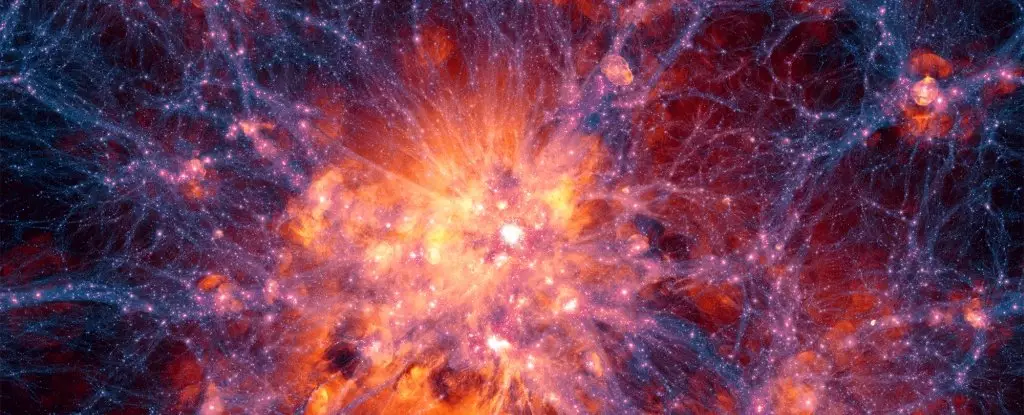Dark matter, an elusive entity that constitutes approximately 27% of the universe, remains one of the most significant mysteries in modern astrophysics. While ordinary matter—everything we can see, touch, and measure—forms a mere 5% of the universe, the presence of dark matter is inferred through its gravitational effects on visible matter, cosmic structures, and the universe’s expansion. Despite its prevalence, the true nature of dark matter remains unknown, leading to a plethora of theories but no definitive answers. The search for dark matter continues, as scientists strive to uncover its secrets and understand its role in the cosmos.
In a pioneering approach, physicists at the University of Southampton have developed a unique detector that aims to advance the search for dark matter. Their innovative experiment involves levitating sheets of graphite in a microgravity environment, which allows for the detection of minute anomalies that could indicate the presence of dark matter. This experimental setup further underscores the notion that to fully comprehend dark matter’s influence on the universe, unconventional methods are necessary. As physicist Tim Fuchs points out, “No experiment on Earth has ever come close to detecting it.” This highlights a significant challenge faced by researchers: the current terrestrial detectors may not be effective due to the overwhelming noise from other sources.
The upcoming experiment will be executed aboard a satellite named Jovian-1, which is expected to be launched in early 2026. By utilizing the conditions of microgravity, the Southampton team hopes to create an environment that minimizes interference from various forces and enhances the sensitivity of their apparatus. The fundamental idea is to utilize the gravitational pull of dark matter, theorized as a “dark wind,” to exert a measurable force on the levitated graphite sheets. In space, this allows for unprecedented sensitivity to minor forces, which could indicate the presence of dark matter. Such innovative experimentation challenges traditional methods of detection that have yielded scant results over the years.
One of the driving motivations behind this research is the vast discrepancy scientists observe between visible matter and gravitational effects. Observations of galaxies reveal that their outer regions rotate at speeds that cannot simply be explained by the visible mass alone. This phenomenon suggests a dominant presence of dark matter that outweighs the visible universe by a factor of six to one. This kind of statistical evidence propels the need for further exploration, particularly in understanding how dark matter interacts—or fails to interact—with the matter we are familiar with.
The Jovian-1 satellite, which will function as the host for this ambitious experiment, reflects a collaborative effort between students and researchers from the University of Southampton, the University of Portsmouth, and Surrey University. Their combined expertise aims to tackle the challenges posed by dark matter detection. While the satellite may be compact, just about the size of a shoebox, its potential to reshape our understanding of dark matter is vast. If successful, this groundbreaking experiment could significantly enhance the scientific community’s understanding of this enigmatic substance, regardless of whether or not a direct detection occurs.
The quest to understand dark matter is not just about confirming its existence; it is about uncovering the fundamental principles that govern the universe. The Southampton team’s work represents a hopeful trajectory in this realm of inquiry. As the launch of Jovian-1 approaches, the anticipation grows for the potential revelations it may bring. Despite the wait for results, the scientific community remains committed to exploring every avenue, driven by the belief that understanding dark matter could unravel the mysteries of the universe itself.
The endeavor to explore dark matter through innovative experiments like the one at the University of Southampton highlights the relentless pursuit of knowledge in the realm of astrophysics. With each advancement, we draw closer to demystifying one of the universe’s most confounding aspects, reaffirming humanity’s unyielding quest to comprehend the cosmos.


Leave a Reply